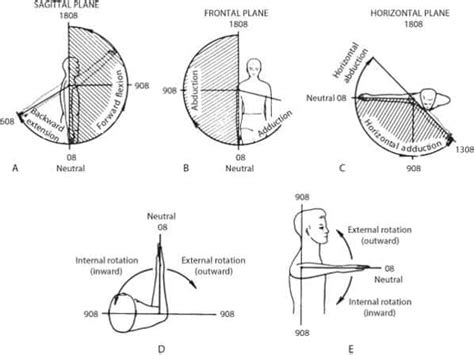Internal Shoulder Rotation Degrees

Understanding Internal Shoulder Rotation
Internal shoulder rotation, also known as medial rotation, is a movement that occurs at the shoulder joint. It involves the rotation of the humerus (upper arm bone) inward, toward the body. This movement is essential for various everyday activities, such as lifting, carrying, and throwing. The degree of internal shoulder rotation can vary depending on the individual and their overall flexibility.
Normal Range of Motion
The normal range of motion for internal shoulder rotation is approximately 70-90 degrees. However, this range can vary from person to person, and some individuals may have a more limited or extended range of motion due to factors such as muscle imbalances, injury, or anatomical differences. It’s essential to note that internal shoulder rotation is often measured in conjunction with external rotation, as the two movements are closely related.
Factors Affecting Internal Shoulder Rotation
Several factors can influence the degree of internal shoulder rotation, including: * Muscle strength and flexibility: Weak or tight muscles in the shoulder, such as the rotator cuff, can limit internal rotation. * Joint mobility: Restrictions in the shoulder joint, such as those caused by arthritis or injury, can affect internal rotation. * Posture and alignment: Poor posture or alignment of the shoulder joint can impact internal rotation. * Age and activity level: Internal rotation can decrease with age or due to a sedentary lifestyle.
Measuring Internal Shoulder Rotation
Internal shoulder rotation can be measured using various techniques, including: * Goniometry: A device that measures the angle of joint movement. * Visual estimation: A healthcare professional may visually estimate the degree of internal rotation. * Range of motion exercises: A series of exercises that assess the shoulder’s ability to move through its full range of motion.
Improving Internal Shoulder Rotation
To improve internal shoulder rotation, individuals can perform various exercises and stretches, such as: * Cross-body stretch: Hold the affected arm with the other hand and gently pull it across the body. * Internal rotation stretch: Hold a light weight or resistance band and rotate the arm inward. * Rotator cuff exercises: Strengthening the rotator cuff muscles through exercises like shoulder rotations and wall slides.
📝 Note: It's essential to consult with a healthcare professional before starting any new exercise or stretch program, especially if you have any underlying medical conditions or concerns.
Table of Internal Shoulder Rotation Degrees
The following table illustrates the normal range of motion for internal shoulder rotation:
| Age Group | Normal Range of Motion (degrees) |
|---|---|
| Young adults (18-30 years) | 80-90 |
| Adults (31-50 years) | 70-85 |
| Older adults (51-70 years) | 60-80 |
| Elderly (71+ years) | 50-70 |
In summary, internal shoulder rotation is a crucial movement that can vary in degree depending on individual factors. Understanding the normal range of motion and factors that affect internal rotation can help individuals maintain optimal shoulder health and mobility. By incorporating exercises and stretches into their daily routine, individuals can improve their internal shoulder rotation and reduce the risk of injury or discomfort.
To finalize, maintaining optimal shoulder health is crucial for overall mobility and quality of life. By being aware of the factors that affect internal shoulder rotation and taking steps to improve it, individuals can reduce their risk of injury and maintain a healthy, active lifestyle.
What is the normal range of motion for internal shoulder rotation?
+
The normal range of motion for internal shoulder rotation is approximately 70-90 degrees.
What factors can affect internal shoulder rotation?
+
Factors that can affect internal shoulder rotation include muscle strength and flexibility, joint mobility, posture and alignment, age, and activity level.
How can I improve my internal shoulder rotation?
+
You can improve your internal shoulder rotation by performing exercises and stretches, such as cross-body stretches, internal rotation stretches, and rotator cuff exercises.